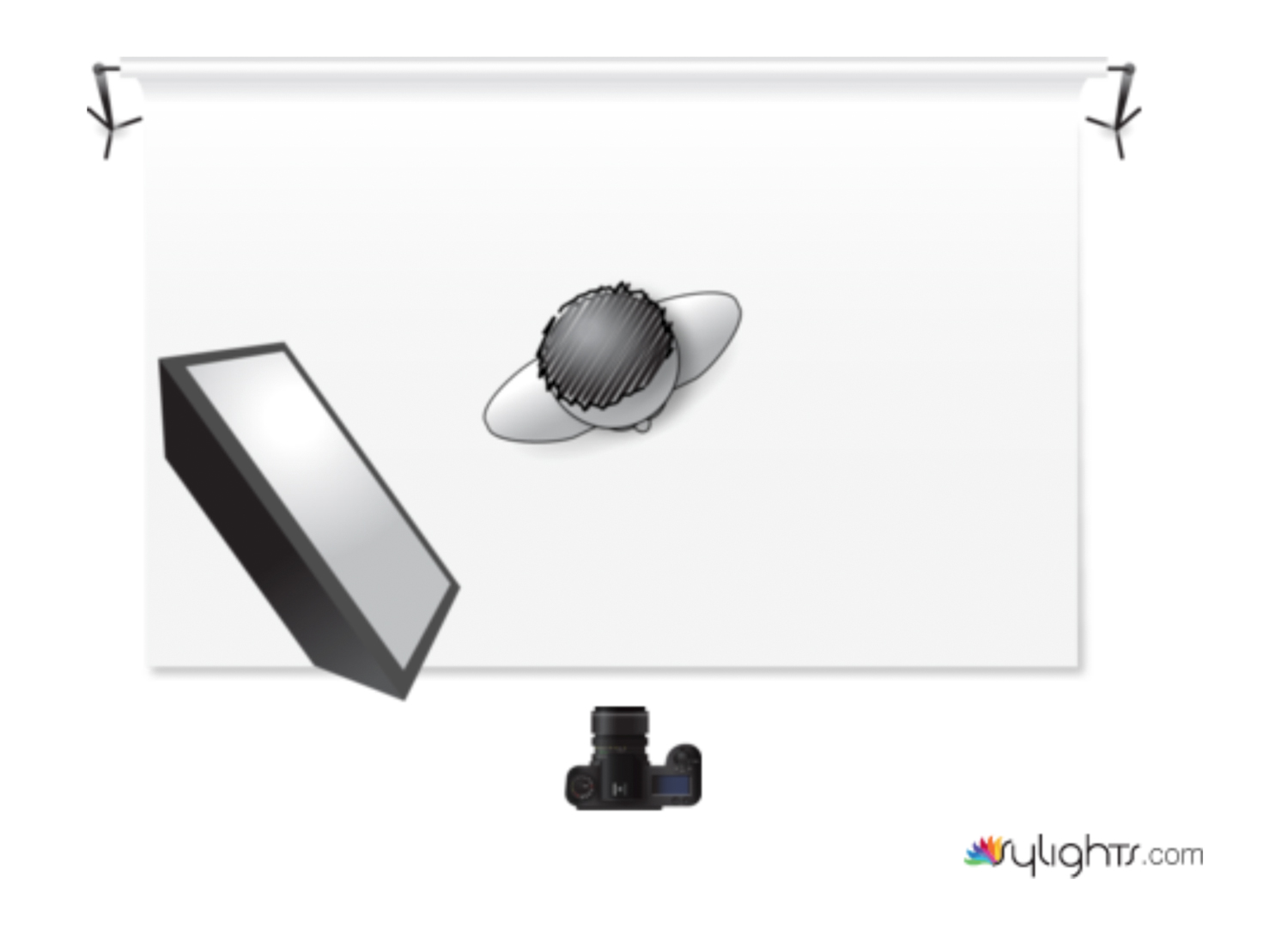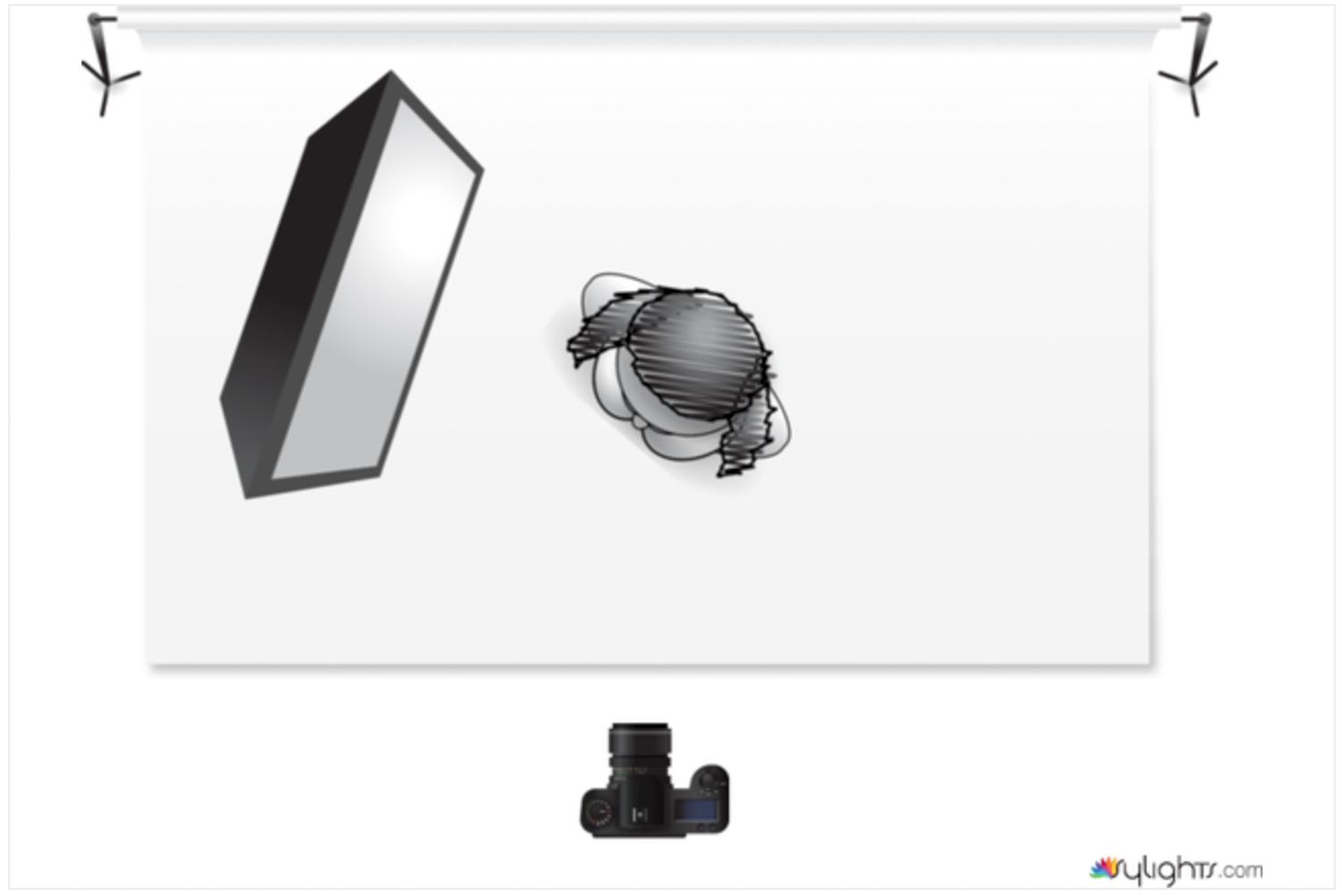Broad and Short Lighting in Photography: A Simple Guide

What is broad lighting in portrait photography? And what is short lighting?
Understanding the differences between these two studio lighting patterns can be difficult, especially when you’re just starting out. But they’re a great way to add variety to your portraiture, and as you’ll soon see, they’re easy to produce!
Below, I’ll share everything you need to know for gorgeous broad and short lighting setups, including:
- What broad and short lighting actually is
- How to use broad and short lighting for beautiful portraits
- Plenty of examples and lighting diagrams so you know exactly what to do
So whether you’re a beginner looking to expand your knowledge of portrait photography, or you’re an advanced studio photographer hoping to deepen your knowledge of a classic technique, you’ve come to the right place.
Let’s dive right in.
Table of Contents
What is broad and short lighting?
Broad lighting and short lighting simply refer to the side of the face that is lit by your strobe.
With broad lighting, you light the side of the face that is closer to the camera.
And with short lighting, you light the side of the face that is farther from the camera.
Check out the two images below. The image on the left features short lighting, while the image on the right features broad lighting:

As you can see, broad lighting gives portraits a friendly, inviting look, while short lighting tends to be far more dramatic.
Note that short and broad lighting can be used in combination with many standard lighting patterns. For instance, you might combine broad or short lighting with a Rembrandt pattern (where you light from the side to produce a triangle under the subject’s cheek). You can also combine broad or short lighting with loop lighting and split lighting.
Technically, whether you use broad or short lighting has more to do with the subject’s head angle than the angle of the light on their face. Once you’ve positioned your subject and added the strobes, by photographing from one side of their face, you’ll get broad lighting – but ask them to turn their head/body to the other side, and you’ll get short lighting, instead. Make sense?
How to capture beautiful broad lighting photography (step by step)
Broad lighting looks great, but how is it done? In this section, I’ll give you a step-by-step plan for creating a broad lighting setup, and I’ll also explain when you might want to use this lighting pattern.
Setting up a broad lighting portrait
Here’s a simple way to set up broad lighting (though remember: you can use broad lighting with many lighting patterns).
First, position your key (main) light 45 degrees from your subject, as illustrated in the diagram below:

Ask your subject to face the camera while you position it at eye level. Then ask them to turn about 45 degrees to the side so they face away from the light:

And…that’s it. You now have a tried-and-tested broad light setup. Go ahead and have fun! Here’s the shot that I took using the setup featured above:

When should you use broad lighting?
Broad lighting will affect your portraits in several clear ways. For instance, it will:
- widen the face
- usually throw the short side of the face in shadow (depending on light placement)
- provide more contrast than certain frontlit lighting patterns, such as butterfly and clamshell lighting
Because broad lighting tends to broaden (!) the face, use it when photographing subjects with a narrow face, but avoid broad lighting setups on subjects with wider faces; this can exaggerate their face shape.
Also, if there’s a feature on one side of your subject’s face that you’d like to deemphasize, simply position the feature on the short side of the face and use broad lighting to enshroud it in shadow.
Moving ahead with broad lighting
Lighting patterns are a starting point, but as you gain more experience, you’ll want to fine-tune your setup.
For instance, by adjusting the strobe distances, you can create harder light (by moving the light far away) or softer light (by moving the light up close).
And by adding lighting modifiers, you can create flattering, soft effects (softboxes are great for this!), as well as hard, intense portraits (try a bare flash or a snoot).
I’d also recommend you experiment with fill lights and fill reflectors. A bit of fill will lift the shadows and reduce contrast for more flattering results, while removing fill will turn up the drama.

Before you take a single photo, try to determine exactly what you want to produce. That way, you can create a broad lighting setup that looks exactly as you imagine.

How to capture beautiful short lighting photography (step by step)
How can you get started with short lighting photography?
In this section, I’ll show you how to create a dramatic short lighting setup, with the goal of producing this kind of image:

Setting up a short lighting portrait
As with broad lighting, there is no single way to create a short lighting portrait, but here’s a great way to get started:
First, position your light source forty-five degrees from your subject.
Have your subject face forward, so they’re looking straight down the lens barrel – then ask them to turn their head toward the light.

For a more dramatic look, you can bring your light back behind the subject slightly, as illustrated in this diagram:

That’s it; take some photos While short lighting is trickier to get right, it’s still easy to accomplish. And once you have it figured out, it will become second nature.
When should you use short lighting?
Short lighting has several effects. It:
- narrows the face
- throws the broad side of the face in shadow
- provides heavy contrast
Because a short-lit portrait is mostly dark, it’s a good way to hide imperfections. Short lighting is also an easy way to produce dramatic, low-key images, and (thanks to the heavy, face-sculpting shadows) images that are full of depth.
If your subject has a broader face, you can slim it down with a short lighting pattern. And of course, if you’re not sure what works best, you’re always free to test out both broad lighting and short lighting before proceeding!
Moving ahead with short lighting

Since short lighting is so shadow-centric, you will almost certainly want to fill in shadows to control the contrast. You can use a reflector, but if your shadows are quite deep, opt for fill light, instead. Try exposing your fill light three stops less than your key light; that way, you’ll retain shadows while ensuring that all of the details are still present.
Here, I’ve used a reflector to reduce the contrast, while still maintaining that dramatic short-lit look:

And don’t forget to test out different modifiers for harder or softer lighting effects. I’ve used a softbox in the examples above, but I recommend testing out bare flashes, octaboxes, beauty dishes, and more!
Broad and short lighting: final words
Well, there you have it: two basic but powerful lighting patterns that you can use to create bold, dynamic portraits.
I encourage you to go out and practice with each of these setups. Experiment liberally with the distances between your light and subject, test out different modifiers, and try every fill lighting technique that you can come up with.
Now over to you:
Which portrait lighting pattern do you prefer, broad lighting vs short lighting? Which do you plan to use in your own portrait photography? Share your thoughts in the comments below!





